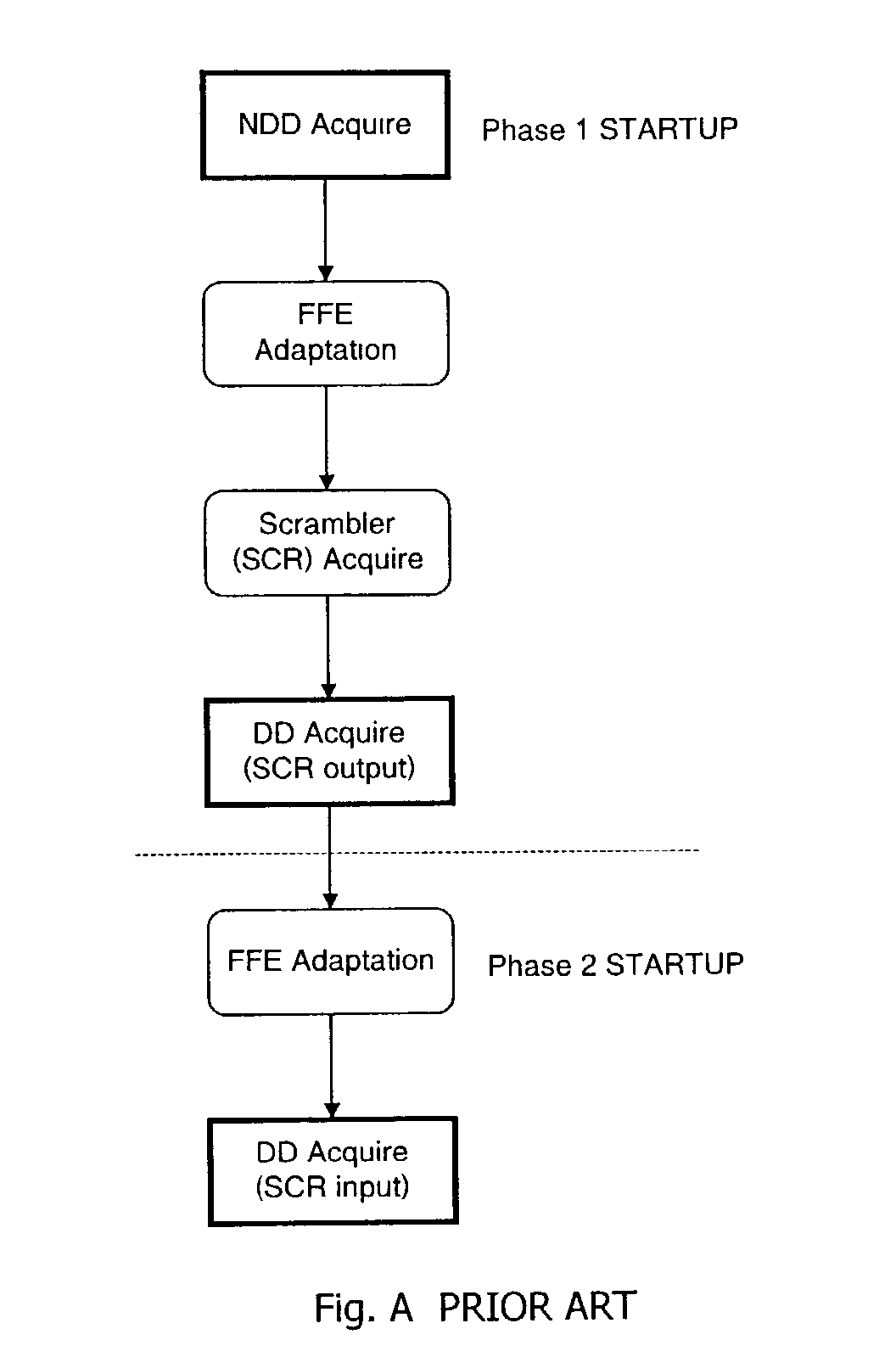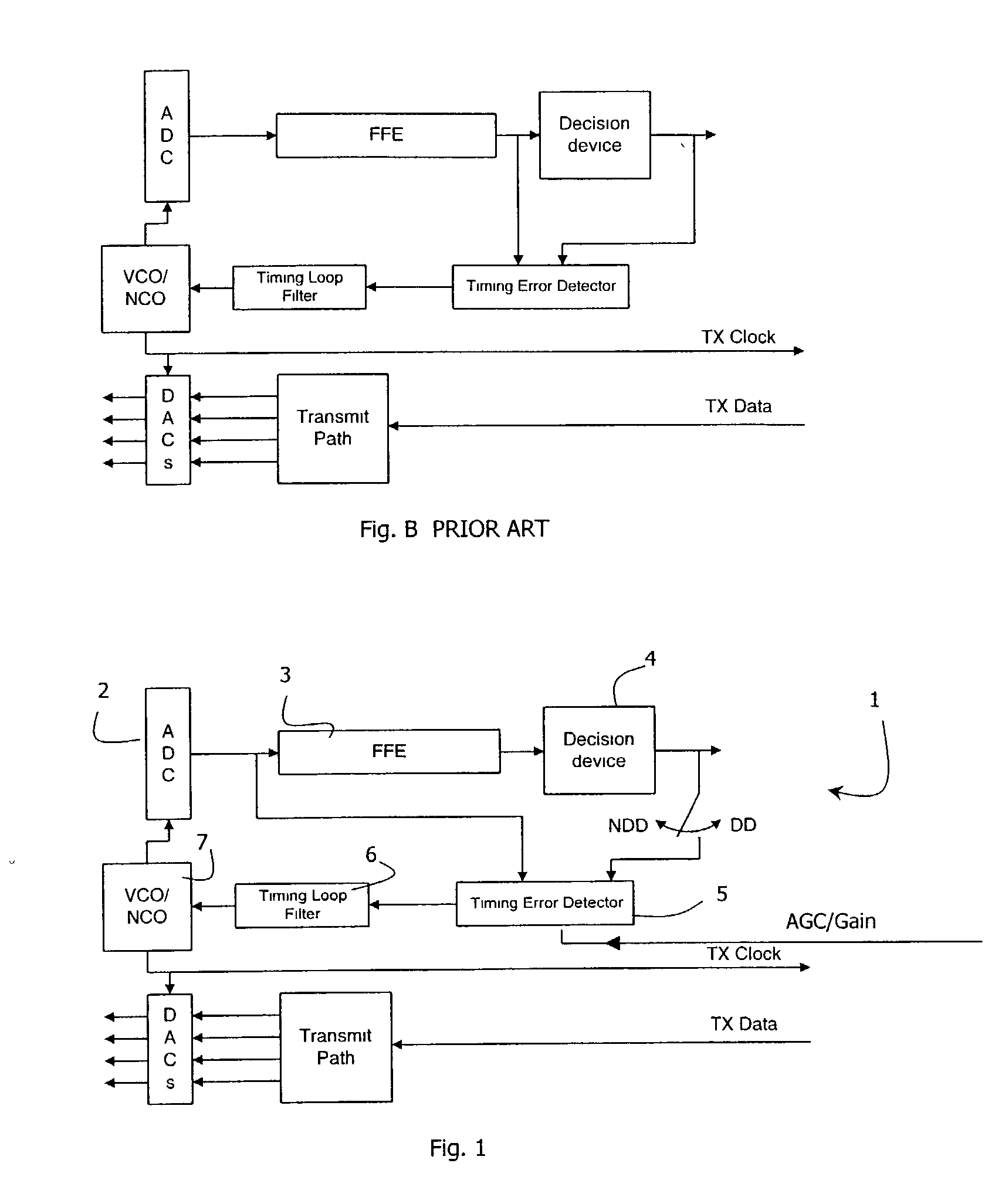Timing recovery in data communication circuits
a data communication circuit and timing recovery technology, applied in data switching networks, data system details, pulse techniques, etc., can solve the problems of reducing the performance of detectors, the inability of oscillators in this sampling scheme to implement digitally, and the closing of the eye of the equalizer outpu
- Summary
- Abstract
- Description
- Claims
- Application Information
AI Technical Summary
Problems solved by technology
Method used
Image
Examples
Embodiment Construction
[0035] Referring to FIGS. 1 to 3 there is shown a timing recovery circuit 1 of the invention. The circuit comprises an ADC 2 connected to a FFE 3, in turn connected to a decision device 4. A timing error detector (TED) 5 has inputs from both the ADC 2 and the decision device 4 for DD recovery, and only from the ADC 2 for NDD recovery. Its output feeds a timing loop filter 6, in turn feeding a VCO 7. The TED 5 receives a gain value from the AGC. This is proportional to the length of the cable at startup of the circuit 1.
[0036] Thus, unstable operations arising from timing error detection being affected by equaliser coefficients are avoided, because timing and symbol detection processes are independent.
[0037] The NDD timing recovery circuitry is completely decoupled from the FFE because it takes its input solely from the output of the ADC 2. This input is fed through a nonlinearity (the TED) and the error generated is passed into a control loop which drives the Numerically Controlled ...
PUM
 Login to View More
Login to View More Abstract
Description
Claims
Application Information
 Login to View More
Login to View More - R&D
- Intellectual Property
- Life Sciences
- Materials
- Tech Scout
- Unparalleled Data Quality
- Higher Quality Content
- 60% Fewer Hallucinations
Browse by: Latest US Patents, China's latest patents, Technical Efficacy Thesaurus, Application Domain, Technology Topic, Popular Technical Reports.
© 2025 PatSnap. All rights reserved.Legal|Privacy policy|Modern Slavery Act Transparency Statement|Sitemap|About US| Contact US: help@patsnap.com



